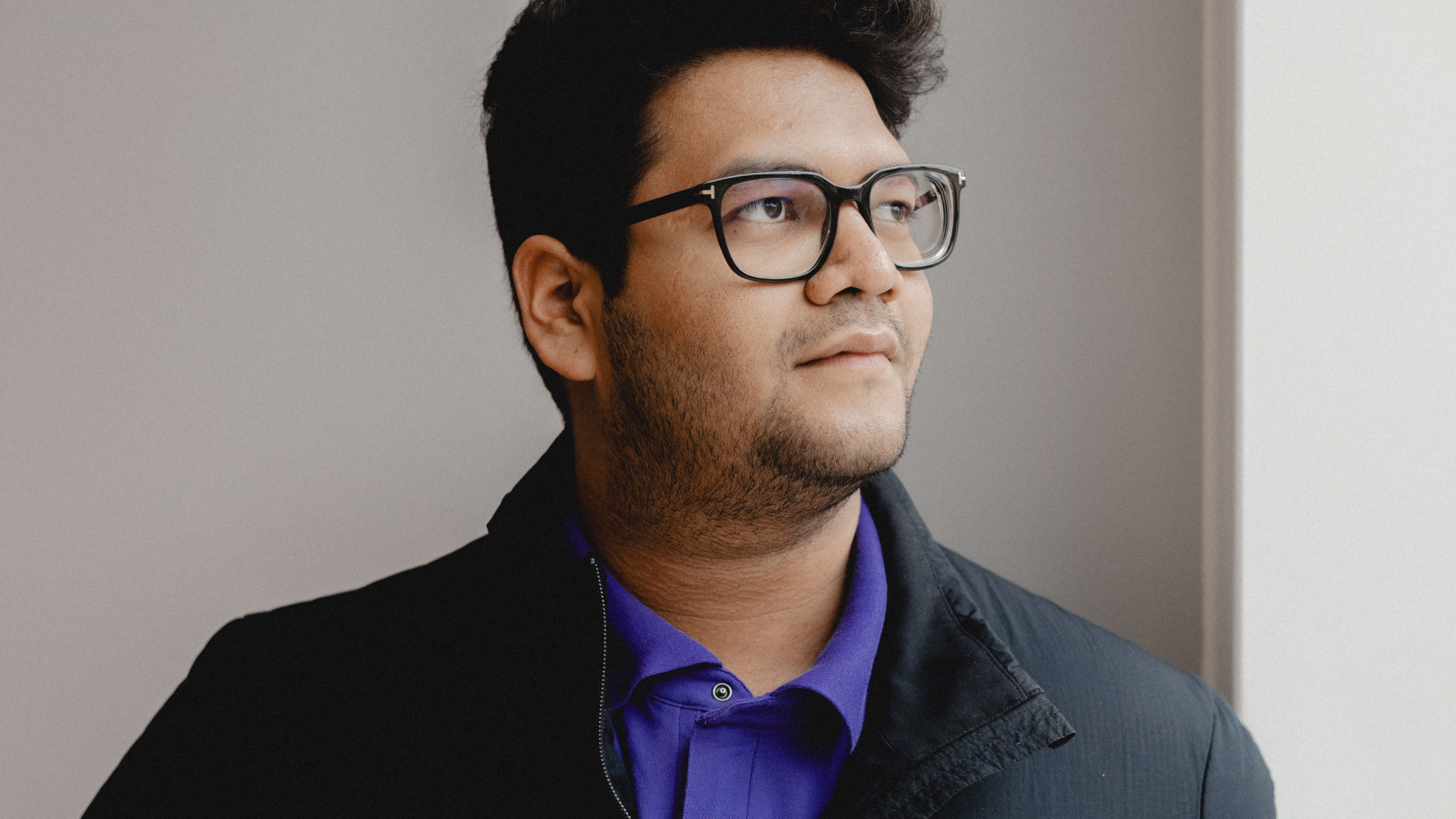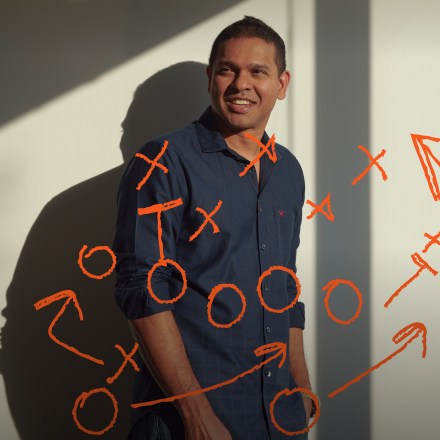
Cross-Border Banking Takes Center Stage
In the summer of 2022, Parth Garg woke in his Bangalore apartment and realized something was very wrong. For the past six months, 21-year-old Garg and his cofounder had been hard at work on a revenue-based finance company to help Indian software businesses access capital debt. While the company had successfully launched a few months earlier and saw promising initial revenue, Garg and his cofounder were beginning to doubt its longevity. They were also struggling as coleaders with differing management styles, which often led to heated late-night arguments.
Now, as Garg walked through the cramped home he and his cofounder shared with their seven other employees (“Yes, nine of us lived and worked under one roof,” Garg says), he discovered his cofounder was gone.
In the following hours, Garg learned his cofounder had booked a one-way ticket back to the States. Without discussing it with Garg, he had also emailed their investors to let them know he would be returning their seed round. In his eyes, the company was done. “It took a while to even comprehend what was happening,” Garg says. “It was one of the biggest gut punches I’d ever experienced. My team was in shock. Our investors were freaking out. And I had to decide what to do.”
“It was one of the biggest gut punches I’d ever experienced. My team was in shock. Our investors were freaking out. And I had to decide what to do.”
Parth Garg
Garg knew the company in its current iteration didn’t have legs. The Indian SaaS companies seeking debt capital were largely project based with unpredictable revenue, and the Indian market for bundling these companies and selling them to traditional investors—a strategy he and his former cofounder had discussed—was too premature. But Garg also knew he had a fantastic team, and they had built a strong foundation for a fintech company. What if they repurposed the technology for something else?
“In the following days, I had to convince both the investors and my coworkers to stick with me while I figured out a new direction for the company, a new business plan, and a case for why they should trust me to be its solo leader,” Garg says. As he considered how he might pivot the company, Garg returned again and again to one problem in particular—a pain point he had long experienced growing up as an expat. Garg went back to his team with a pitch for what would become Aspora.
Launched in the winter of 2022, Aspora is a financial services platform for the global diaspora, offering tools for immigrant communities to bank across borders and participate in the growth of their native countries’ economies. Aspora is currently focused on remittances for the Indian diaspora—the largest in the world. Just two years into its journey, the company is used by over 700,000 non-resident Indians (NRIs) and processes hundreds of millions of transfers each month. That’s over $4 billion in remittances a year, and 4% of all NRI remittances worldwide. Oh, and his growing team no longer lives under one roof.
Garg’s connection to the global diaspora dates back to his childhood. He was born in India and at age 11 moved with his family to Abu Dhabi. In the United Arab Emirates, a country of 90% expats, the challenges of international banking were all too familiar. Transferring money between accounts in different countries was a slow, bureaucratic process with steep exchange rates and fees. For Garg’s family and other NRIs, the path to invest in the Indian stock market, take out a loan, or purchase real estate back home was riddled with administrative hoops. Certain Indian banks offered NRI-specific accounts, but the process of opening one required visits to public notaries, phone calls with banks, and even trips back to India to finish paperwork in person. “Only 30% of NRIs have these accounts,” Garg says. “So 70% of NRIs that want to participate in their country’s growth just can’t.”
But for 11-year-old Garg, entrepreneurship and solving the problem of international banking were a ways off. As a child, Garg was passionate about two subjects; the first was physics. “I was fascinated by cosmology,” he says. “I would stay up late watching YouTube videos and reading works by Carl Sagan and Alexander Friedmann because I was convinced there was nothing more important than learning about the universe. That was my entire goal, to become a physicist.” When he wasn’t heads-down on physics, teenage Garg was busy with his other passion, one that exercised a very different part of his brain: theater.
“Theater was my outlet for creative expression,” Garg says. “I was very playful as a kid, and in strict Indian schools, the only place you could really be playful was on the stage or in drama club.” Garg participated in as many school productions as he could, and as a teenager, he took up improv and directing. “Theater was always the thing that recharged me the most,” Garg says. “With directing, I learned how to be a leader and communicate a vision. With improv, I learned to think quickly on my feet. Above all, I think theater in general taught me empathy. When you’re acting, you’re embodying someone else. You constantly have to think from other people’s perspectives, understand what’s going through their mind, and adapt.”
“With directing, I learned how to be a leader and communicate a vision. With improv, I learned to think quickly on my feet.”
Parth Garg
When Garg arrived as a freshman at Stanford in the fall of 2019, he fell easily into the campus’s theater community, taking part in the longstanding, annual student-written musical Gaieties. His entry into physics at Stanford, however, led to a personal inflection point. “I realized pretty quickly that while I was good at physics, I wasn’t great,” Garg says. “There’s this statistic that almost every physicist to win the Nobel Prize was awarded it based on work he or she did under the age of 24. There’s only a small sliver of people that have the IQ to be able to do groundbreaking research. I remember this kid my freshman year who never took undergrad physics classes. He was approved to go straight to grad school ones. That’s sort of when I knew, I’m probably not going to be part of that small sliver of groundbreaking physicists. And that was pretty shattering.”
Garg hit pause on the Russian period drama playing on his laptop and stared up at the ceiling of his childhood bedroom in Abu Dhabi. It was the summer of 2020, and Garg was feeling lost. A few months earlier COVID-19 had hit, sending the world into lockdown and Stanford students home to finish classes remotely. Garg had emailed Stanford to let the university know he was taking his sophomore year off. “I didn’t want to do classes online, but I also just didn’t have a clue what I wanted to do with my life,” he says.
Garg describes the first half of the year as “a lot of moping around” and cycling through foreign period dramas. One night over dinner, however, his father, who was working in industrial trading at the time, brought up a problem he had observed with grocery stores purchasing bulk food items: The stores would stock their shelves with goods, but when those goods neared expiration, customers were less likely to buy them. The goods were often thrown away.
The gears in Garg’s mind began to turn—there had to be a solution for this. “I began to think about the food service industry,” he says. “What if ingredients that were close to expiring could be sold to restaurants? The restaurants could buy them at a lower cost than from traditional suppliers, cook with the ingredients day-of, and prevent food waste.”
Garg texted friends he had collaborated with in high school on a project that helped teenagers find volunteer opportunities. Over the next few months, they built a system that connected Abu Dhabi grocery stores to restaurants. “I really, really enjoyed it,” Garg says. “This feedback loop of talking to users, asking what they wanted, going and making it, and then shipping it back was pure dopamine. I realized I wanted to continue doing this.” In the fall of 2021, Garg re-enrolled at Stanford with newfound determination to become an entrepreneur.
The year that followed was a rollercoaster of twists and turns, highs and lows for Garg. In his first semester back at school, Garg and a classmate came up with their idea for a company that helped businesses access capital debt. On a whim, they pitched it to Y-Combinator and were accepted to its Winter 2022 batch. During their time at YC, the startup shifted focus from American microbusiness to Indian software businesses. “Fifteen percent of India’s GDP is from software companies, but almost none of them have access to debt capital because Indian banks don’t know how to lend against software,” Garg says. “They only know how to lend against tangible assets.” At YC’s Demo Day, they received a seed investment and made arrangements to move to India to launch their company. Just three months after re-enrolling at Stanford, Garg found himself dropping out again.
As Garg and his cofounder set up shop in their house in Bangalore and hired a team of seven developers to live and work with them, Garg found the challenges of participating in his native economy back on his radar. Although he had credit history in the UAE and in the United States, and although he had Indian citizenship, he struggled to get approved for an Indian credit card. “It was incredibly frustrating,” Garg says. “It was again this problem of when you are living in between host and native countries, you fall into a category where neither really knows what to do with you, and financial life is very hard. I didn’t understand why, in a world with so many modern financial tools, something like opening a credit card in the country where you’re from should be so difficult.”
“When you are living in between host and native countries, you fall into a category where neither really knows what to do with you, and financial life is very hard.”
Parth Garg
As the high of launching the capital debt business in the spring of 2022 gave way to the lows of realizing that Indian SaaS companies lacked predictable revenue and the increasingly tenuous relationship with his cofounder, followed by his sudden departure, Garg began thinking more critically about the problem of international banking.
“I ended up going into this deep rabbit hole of cross-border finance, and I spoke to over 100 people around the world who, like me, were dealing with this broken system,” Garg says. The global diaspora is estimated to be around 281 million people, approximately 3.6% of the world’s population, and the majority of diasporans who work in another country make 10 times the amount of their counterparts back home. In 2023, the World Bank reported $656 billion in remittances globally and that in more than 60 countries, remittances represent 3% or more of GDP.
The problem, Garg observed, was that banking technology hadn’t been updated to meet the needs of today’s global workforce. Banks have traditionally been hyperlocal institutions, operating only in local currencies and under the rules and regulations of local governments. “Banks use these very patchy systems to connect with each other,” Garg says. “I realized there was an enormous market for modern cross-border banking tools, and there weren’t a lot of players in this space. The pitch I made to the investors and to my coworkers was, ‘We should go after it.’ And to their credit, they all said yes.”
Aligned on a new mission, Garg and his team began to look at case studies of other successful global fintech companies. “We read a lot about the early strategies of Wells Fargo and Nubank and learned that if you want to make a consumer financial platform work, you need customers using four to five products with you. Otherwise you’re not going to be able to build a sustainable business from a customer acquisition cost and longevity perspective,” Garg says. “And to get people using four to five products, you need hyper-specific product roadmaps for each ideal consumer profile.”
Garg noticed competitors in the cross-border finance space—companies like Wise and Remitly—were going after broad audiences: immigrants of many backgrounds transferring money to many countries. “We realized our competitors were actually catering to hundreds of ideal customer profiles,” Garg says. “That’s because every immigrant group is very different in terms of cultural nuances and needs. We felt it would be virtually impossible for us to go after a wide population like our competitors and succeed at deep product integration into users’ lives.”
Knowing they needed to hone in on a subset of immigrants, Garg identified the seven biggest diasporas: Indian, Mexican, Chinese, Bangladeshi, Pakistani, Filipino and Nigerian. “The seven biggest diasporas are 90% concentrated in seven developed countries,” Garg says, “the U.S., Canada, Europe, the U.K., the UAE, Singapore and Australia. So we then had this question of, okay, do you start off by building services for one developed country and all diasporans within that population? Or do you build tools for one diaspora across seven developed countries?”
Garg went with the latter, choosing India as its first diaspora and remittances as its first product. “That was the best choice we could have made early on,” he says. “It naturally forced us to get licensed across those seven key developed countries, form relationships and build rails with them, and be multicurrency from day one.”
Critically, Garg’s ambitions coincided with the emergence of a new technology: stablecoins. Aspora’s infrastructure is built on stablecoin rails, which allows remittances to be transacted without intermediaries and to be settled instantly. Compared to SWIFT rails, which remain the dominant system for financial messaging, stablecoins offer a faster, less expensive and more transparent system for transferring money internationally. Transactions via stablecoin have exploded in the last few years, with the weekly trading volume of stablecoin USDC growing from $5 billion in 2022 to $23 billion in 2024. The technology is also seeing acceptance by major institutions: The U.S. government passed the GENIUS act earlier this year, creating the first-ever federal regulatory system for stablecoins. Stripe, which acquired the stablecoin platform Bridge in 2024, is just one of the dominant fintech players incorporating stablecoins into its infrastructure. For Aspora, it’s a convergence of the right idea, with the right technology, at the right moment in history.
Get the best stories from the Sequoia community.
In November 2024, George Robson—a partner at Sequoia—knocked on the door of an apartment on the outskirts of Dubai. He, along with Luciana Lixandru, another Sequoia partner, had flown to meet with Garg, whose team had launched Aspora’s remittance feature for NRIs living in the U.K. and was now working on it for the UAE. “I had heard about Garg back when he was working on his finance company for Indian SaaS businesses,” says Robson, who had been a product owner at the French fintech company Revolut. “I remember thinking that was an objectively bad idea.” But since pivoting the company, multiple sources had mentioned Garg’s name to Robson. “You had this 23-year-old doing something really interesting,” Robson says. “He was using stablecoins to power instant, 24/7 transactions between foreign banks at half the price for consumers. And he had this vision of using remittances as a wedge to own that consumer financial relationship and eventually build a financial super app for the global diaspora.”
Garg answered the door and walked the two partners down the hall to a windowless kitchen with three chairs. “No table,” Robson says. “He was just like, ‘Yeah, so this is where we’ll do the four-and-a-half-hour deep dive into the company with potential investors.’ We ended up relocating to a hotel lobby, which was a bit more comfortable, but we realized this is a guy whose priority is execution and output. Being in this apartment, which was set up as this sort of hacker house, we saw that his team shared his dedication. Parth has this ability to inject energy and excitement into everyone around him.”
“Being in this apartment, which was set up as this sort of hacker house, we saw that his team shared his dedication. Parth has this ability to inject energy and excitement into everyone around him.”
George Robson
As Robson and Lixandru continued learning about Aspora, they observed an intensity not just from those building the product but from those using it. “This is a customer that literally watches the GBP to INR rate like a hawk because they’re moving money home,” Robson says. “And if you’re moving large volumes, it really matters that you get a good exchange rate. There was a period of about two hours where the GBP to INR rate spiked and we broke all records in the company’s history by some order of magnitude for transactions that were processed. Aspora is dealing with a customer that is sophisticated, excited, financially aspirational, and heavily engaged—and I’ve never seen that before.”
At the end of 2024, Sequoia closed on Aspora’s Series A. In the spring of 2025, they co-led its Series B.
As of August 2025, Aspora has saved users over $15 million in transfer fees. The next product on its roadmap is a digital bank account for NRIs, one that can be opened entirely online. “No more flying back to India to fill out paperwork by hand,” Garg says. “It’s the most requested feature from our user base, so that’s going to be super exciting for us to launch.” This will be followed by products for NRIs to trade stocks and purchase real estate. The goal is to replicate this blueprint for other diasporas—the team has already begun to look toward the Philippines as their next market.
Garg envisions a world where international money transfer as it once was will be just a memory: hours-long calls with banks, waiting days for payments to go through, bracing for fees taken out of remittances sent to loved ones. Instead, all families will be able to send money whenever and wherever and take advantage of other economic opportunities in their native countries—buying a house for their parents, setting up investment accounts for their children.
While Garg hasn’t acted in a play since his time at Stanford, he’s putting the skills he learned in his drama club and improv days to work. The exercise is similar: thinking on his feet, directing a team, and putting himself in someone else’s shoes to deliver a meaningful product. If there’s an equivalent of a standing ovation in the startup world, he’s hoping to get one.



